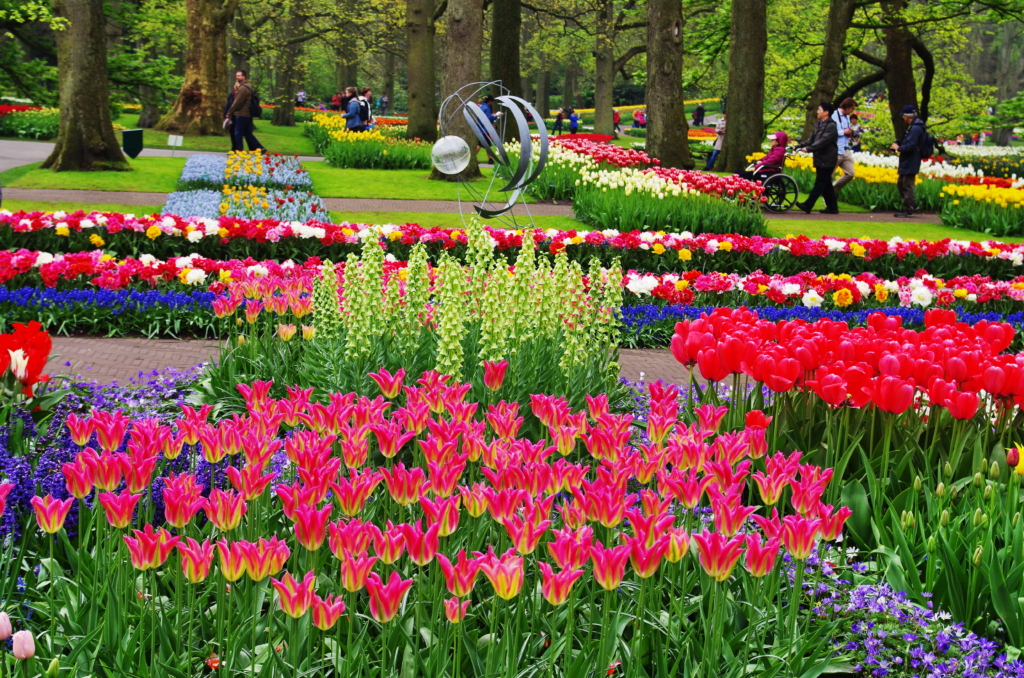The Province of South Holland is located in the west of the Netherlands. The large cities are Rotterdam, The Hague and Leiden, each university cities with many students. The Port of Rotterdam is one of the largest ports in the world which generates a lot of goods transportation to the hinterland. The coastline, including well knowns Scheveningen, Zandvoort and Noordwijk, attracts many visitors especially on warm and sunny days. In the north of the province near Lisse lies Keukenhof which is an internationally renowned flower park that is open for 8 weeks in spring.
Major mobility challenges of the region are related to Keukenhof, the beaches along the coast on warm and sunny days and planned large scale road works. Especially when a combination of those three major events occur on the same day or time period.
The case study will focus on three recurring and/or longer-term situations with a considerable impact on the wider region of South Holland.
A. Traffic management for large scale infrastructure works: Large scale infrastructure works have a considerable impact on the mobility in the region. Currently a large project is ongoing near Katwijk on the A44, while other projects are planned for the coming years on the A4 (connecting The Hague/Rotterdam to Schiphol/Amsterdam) and the N211 which is the The Hague ring road and the main access road to an important greenhouses area. When a major arterial is renovated or redesigned, the traffic state is temporarily disturbed, often weeks to months. It is of vital importance to define the appropriate traffic management measures for mitigating the hindrance caused by the works. Multimodality, transport network-wide approaches and air pollution are increasingly in focus of the delay mitigation strategies.
B. Traffic management in seasonal touristic areas – Keukenhof: Each spring the road network is under extra pressure when the internationally renowned Keukenhof flower park is visited by millions of Dutch and incoming tourists. During the opening period of Keukenhof, 8 weeks, the park welcomes 1.5 million visitors. This has a great societal impact on the liveability in the area:

During this period an extra public transport system is operated aiming to transport visitors (315.000 passengers over 8 weeks) from RAI (national exhibition centre) and Schiphol (in Province North Holland, near Amsterdam), but traffic congestion is still very heavy, with long delays, which even last several hours at the public transport departure locations, resulting in unsatisfied customers, and increasing the likelihood to travel by car. Creating a modal shift to collective transport modes will reduce the travel times and congestion in the area.

C. Traffic management in seasonal touristic areas – beaches: On warm and sunny days the Dutch coast attracts many day visitors even from Germany. Parking spaces tend to fill quickly which makes the roads leading to the coast congested and as a results also public transport cannot get through and is heavily delayed. The South Holland region wants to implement a traffic management approach which foresees peak-demand and is more multi-modal oriented and pro-active. It should inform travellers about expected delays when they can still choose their mode of transportation and in any before they reach the critical road network.
With support of Zuid-Holland Bereikbaar and other related stakeholders.